Lab-to-Lab: US-Russian Lab-to-Lab Collaboration Story [Archived]
Early Lab-to-Lab | Export Control | Nielsen Jr. | Symposia | WSSX
Physics | Reminiscences of Russia | Caroline (Cas) Mason
- Setting the Stage
- Forming Collaboration
- Frequent Experimental Campaigns Part 1
- Frequent Experimental Campaigns Part 2
- Broadening and Declining Collaboration
- Restoring Collaboration
- Epilogue 2006-2016
- Concluding Remarks
March 2006
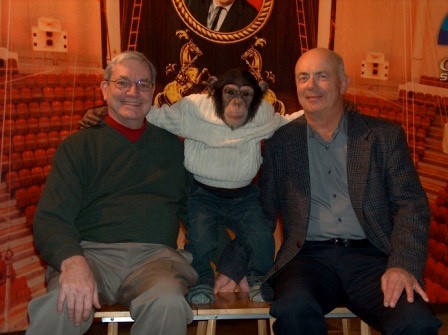
Representatives of University of Nevada, Reno, Physics Department (Dick Siemon, left, and author, right) discuss physics with Moscow Circus representative (March, 2006).
I returned to Sarov for the first time since retirement to participate in the Khariton Scientific Readings, this time as a part-time member of the Physics Department faculty at the University of Nevada (UNR). My UNR colleagues, Dick Siemon and Vlad Makhin, and I were in Sarov to meet with the Chernyshev-Mokhov team to discuss their thoughts on some of the ideas Dick, LANL’s former program director for fusion energy, had for university-level research relevant to Magnetized Target Fusion (MTF). This meeting lead to a joint LANL/VNIIEF/UNR project to study the effect of megagauss magnetic fields on metallic surfaces.
I was honored to help Paul White (LANL’s representative to the Sister Cities program) present to the Sarov Vice-Mayor the last remaining funds in the “Arzamas-16 Children’s Medical Fund,” a fund I had helped start in late 1993 when the medical situation in Russia was desperate.
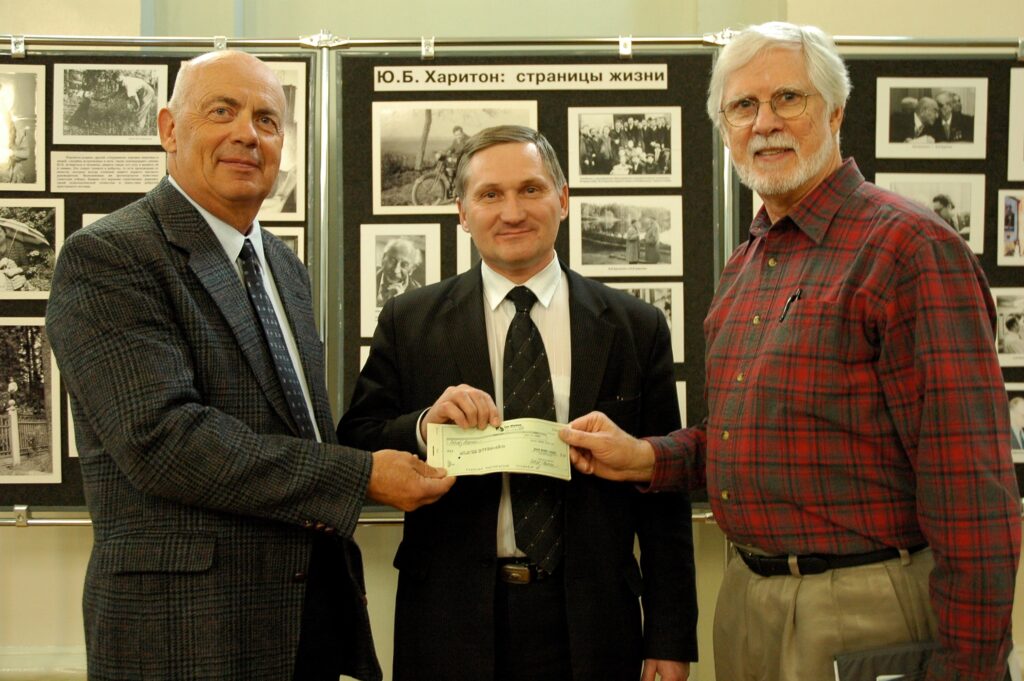
Paul White (right) and author (left) present last remaining funds of Arzamas-16 Children’s Medical Fund to Sarov administrator (March 2006).
Through heroic efforts by our VNIIEF hosts, Bob Reinovsky and I were given permission to visit the grave of Vladimir Chernyshev, who had passed away the previous year. As we walked through the newly fallen, knee-deep snow in the Russian-winter quiet of the cemetery, it was easy to ask ourselves how our lives would have been different if Vlad and his close colleague, Vladislav Mokhov, had not presented us with a proposal for joint collaborative work in September, 1991, back when there was still a Soviet Union.
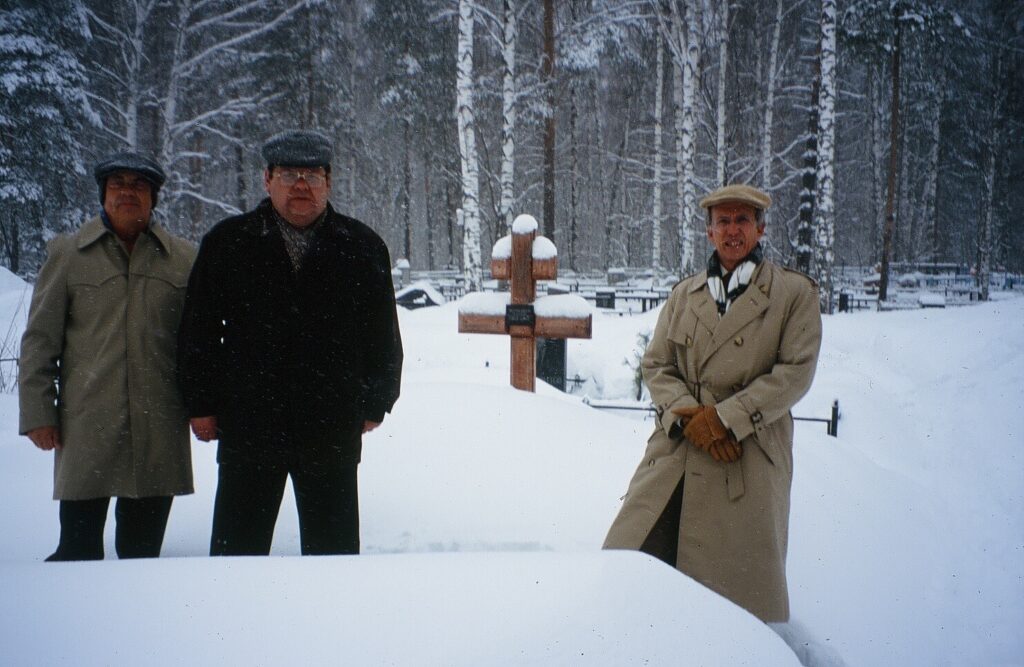
Bob Reinovsky (right) and author (left) visit grave of Vladimir K. Chernyshev, accompanied by Chernyshev’s son (center) (Sarov, March 2006).
November 2006
I was able to reacquaint with some VNIIEF colleagues when they attended the 2006 Megagauss conference in Santa Fe.
July 2008
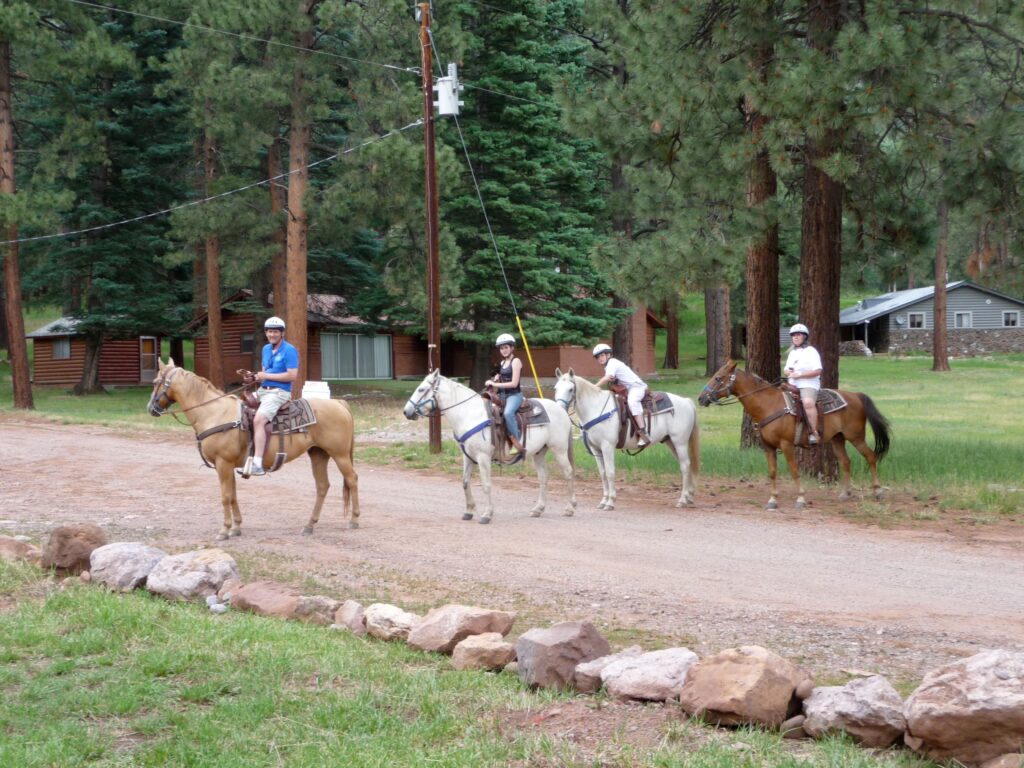
Bob Thomsen of Los Alamos Sister Cities program leads Sarov students on a horseback ride (July 2008).
Hedy and I have always welcomed the opportunity to host Sarov Sister Cities visitors to Los Alamos. The first group of Sarov students in April 1994 had spent several days at our “dacha” in northern New Mexico, near Chama. Even though we had moved from Los Alamos to Tucson in November 2003, we continued to spend summers at the dacha, so when a Sister Cities delegation arrived in Los Alamos in the summer of 2008, we jumped at the opportunity to have visitors.
We showed them some northern New Mexico culture by taking them to the Jicarilla Apache Indian Reservation’s Little Beaver fair and rodeo. They “chased” the Cumbres & Tolted train, America’s longest and highest narrow gauge railroad. And some of them even had a chance to ride our horses.
April 2012
Doomed to Cooperate made it possible for Hedy and I to return to Russia and Sarov. In a sense, the “kick-off” for Doomed to Cooperate was a conference celebrating the 20th anniversary of the US/Russian lab directors’ exchange visits in early 1992. It was an honor for us to be invited to participate along with a number of people who had played indispensable roles in all of the post-Cold-War lab-to-lab endeavors.
Although Hedy had travelled with me to Sarov in October 2003, she was the only wife on the trip and her movement throughout Sarov was quite limited. So this trip was her best chance ever to see many of the sites that had become so significant to me: Moscow, Nizhni Novgorod, and Sarov. In Sarov, Hedy and the other accompanying wives were treated like royalty as the Sarov community welcomed them with tours of the city, including the recently excavated catacombs under Sarov. Most importantly, Hedy had a chance to meet many wonderful Russian women and learn how they lead their lives.
Of special meaning to me was the opportunity to visit the grave of Vladislav Mokhov, who had died only four months earlier, in December 2011. It was a chance to ponder all that had happened in my life because Mokhov had published a paper in 1979. A meeting Hedy and I had with Mokhov’s widow brought tears to all three of us.
Sig Hecker’s aides, Peter Davis and Niko Milonopoulos, had accompanied us through Moscow and Nizhni Novgorod. Unfortunately, our Sarov hosts had not obtained permission for them to enter Sarov, so they spent several days in Nizhni Novgorod while the rest of us went on to Sarov. Therefore, they had a chance to visit the apartment where Andre Sakharov had spent his exile, the apartment that I had visited nearly two decades earlier. This time a poster featuring Sakharov’s scientific work displayed a picture of a joint LANL/VNIIEF experiment.
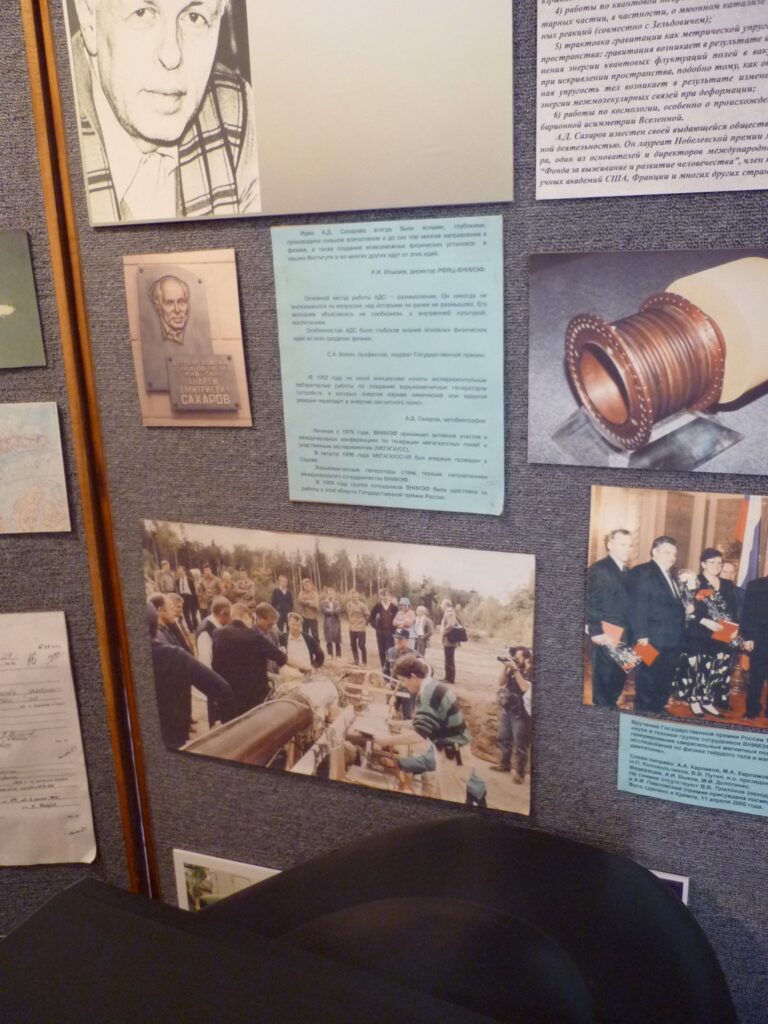
A photo of a September 1995 joint LANL/VNIIEF MAGO magnetized plasma formation experiment is displayed on a poster board at the Andrey D. Sakharov museum in Nizhni Novgorod. The author is in the rear, far right of the photo (Peter Davis photo, 2012).
October 2012
The Megagauss-XIV conference in Maui, Hawaii, provided another opportunity to reacquaint with VNIIEF colleagues. I reported on calculations that used a combination of a US magnetohydrodynamic (MHD) code and a VNIIEF-developed equation-of-state and resistivity model to simulate experiments conducted at the University of Nevada, Reno that were part of a joint LANL/VNIIEF/UNR collaboration.
June 2013
Doomed to Cooperate made it possible for me to return to Moscow once more to participate in a conference and a workshop related to the upcoming book. As always, it was an honor to have an opportunity to present some of the accomplishments in the LANL/VNIIEF collaboration on pulsed-power-based high-energy-density physics.
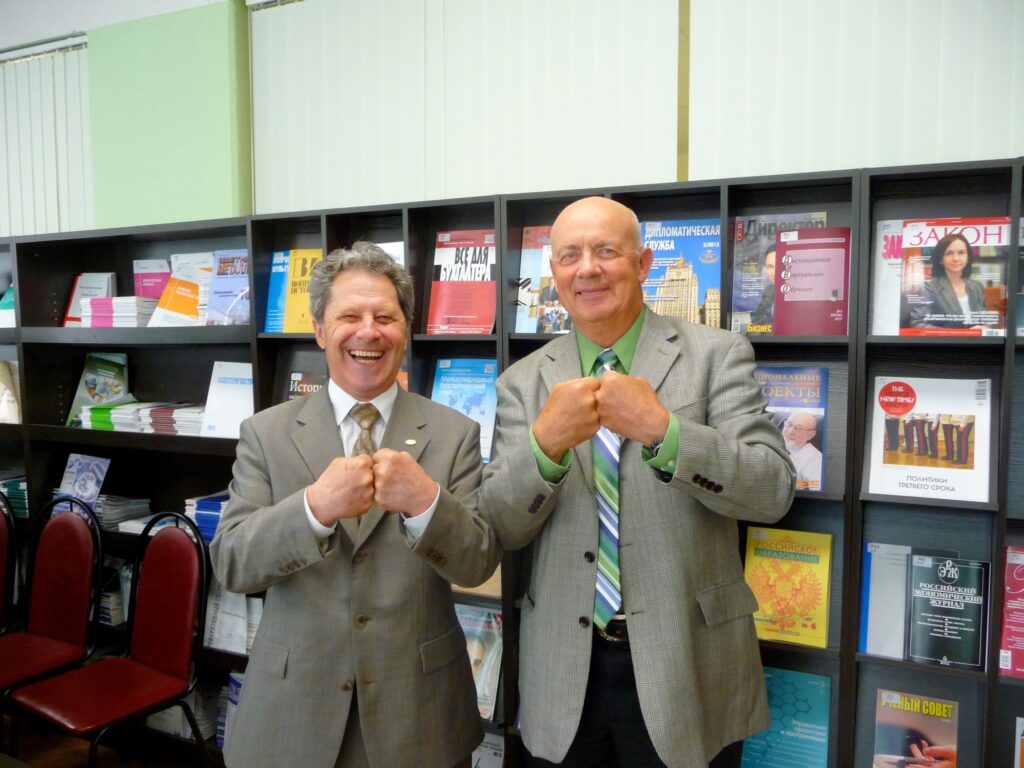
Boris Vodolaga (left) and the author once again describe the relationship between LANL and LLNL and between VNIIEF and VNIITF (Moscow, June 2013).
The Conference on Nuclear Cooperation between the Russian Federation and the United States: Past Accomplishments and Future Prospects gave VNIITF’s Boris Vodolaga and me a chance to reminisce about our first meeting more than two decades earlier, where Boris had clenched is fists to describe the relationship between LANL/LLNL and VNIIEF/VNIITF. We were to agree that not much has changed since then.
November 2016
Even though I am retired, I still do a little physics research as a “hobby” (meaning nobody pays me!!). Where much of my earliest research required some of the most powerful computers then available, now I can do an incredible amount of scientific computation on my MacIntosh laptop. In late 2015 I extended the 1983 Lindemuth/Kirkpatrick paper that had set the stage for my early interactions with VNIIEF. The extended paper attracted so much attention from the fusion energy community that I was invited to give seminars at a number of US labs and universities. And, in November, I gave a prestigious “invited tutorial” at the annual meeting of the American Physical Society Division of Plasma Physics, the most important fusion energy conference of the year where only 4 of the approximately 2000 papers presented were “tutorials.” If the LANL/VNIIEF collaboration had not kept interest in Magnetized Target Fusion going for two decades and more, that paper, the seminars, and the tutorial just might not have happened.
Doomed to Cooperate lead to an invitation for me to give a seminar at Stanford University on my Russian interactions.
Next >> Concluding Remarks >>
